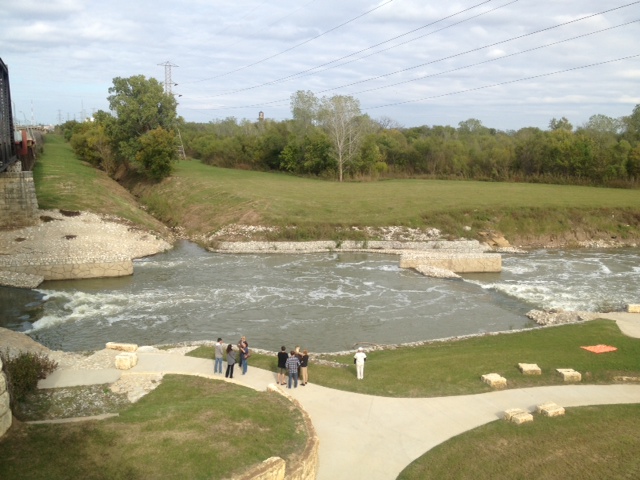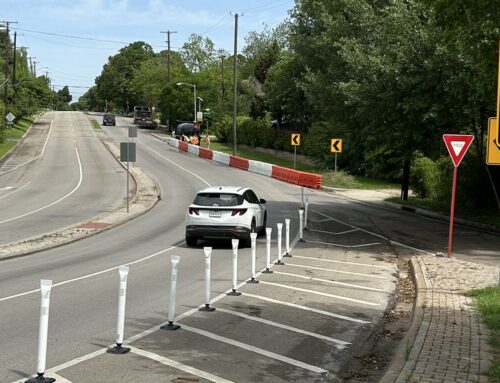The $4 million man-made whitewater feature in the Trinity River, known as the “standing wave,” was flawed from the start.
The wave, which is part of the Santa Fe Trestle Trail park just southeast of Downtown, opened in January 2011. Less that six months later, the U.S. Army Corps of Engineers told the City of Dallas that the feature doesn’t meet standards.
From the project’s inception in 2003, it seemed like a bad idea, yet it kept moving forward, City Councilman Phillip Kingston said this week.
“It was done at the behest of rich people who saw this kind of park on vacation somewhere, and it was run through this city hall,” he said.
Now City Council has until March 16 to come up with a detailed plan to remove or correct the wave. There are a few options. The city could completely remove the feature, they could partially remove it, or they could try to fix the problem.
One early estimate for completely removing the wave came in at $3 million, although every scenario has not been explored yet.
The problem with the feature lies with a bypass channel on the downtown side of he river. The Corps found that it doesn’t allow small motorized watercraft to travel upstream. It therefore hinders navigation.
Park and Recreation department director Willis Winters presented possible plans to City Council’s Transportation and Trinity River Project committee this week. The presentation focused too heavily on fixing the wave rather than removing it, City Councilman Phillip Kingston said.
“All I really want to know is how cheap can I get it out of there?” he said.
City Council members Scott Griggs and Sandy Greyson also said the feature ought to be removed. But committee chairman Lee Kleinman said he would prefer for it to be repaired. The full City Council discusses the options in their meeting today.
The city is considering a lawsuit against consultants who recommended using gabion rather than poured-in-place concrete to construct the feature, at a savings of $1.2 million. So there’s a chance some of the costs involved could be recouped in the future. But in the meantime, it will be paid from Trinity River bond funds.






